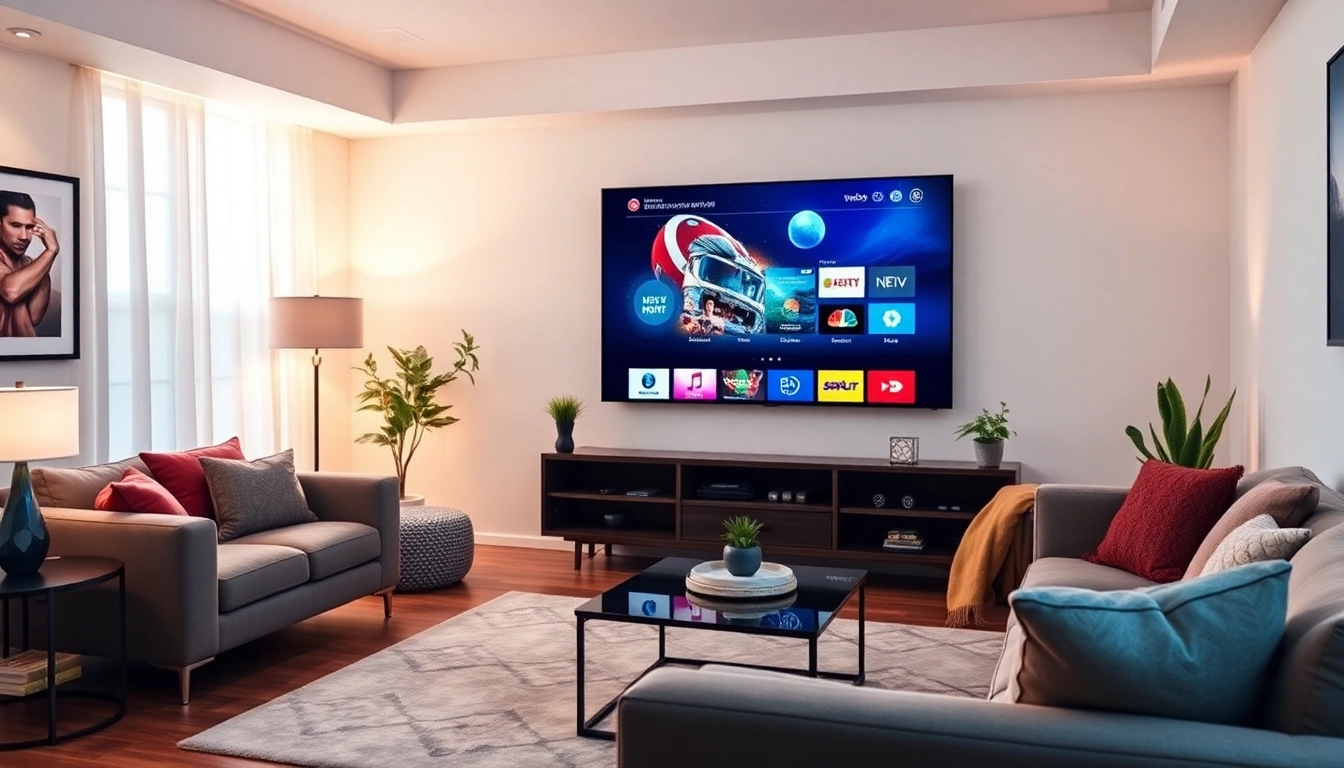Understanding Multi-screen Digital Signage Management
In today’s digital-first world, businesses and organizations are increasingly turning to technology to communicate with their audiences. One of the most impactful ways to achieve this is through Multi-screen digital signage management, which allows for the display of engaging content across multiple screens simultaneously. This approach not only enhances visibility but also creates dynamic and immersive experiences that can capture attention and drive engagement.
What is Multi-screen Digital Signage?
Multi-screen digital signage refers to the use of multiple displays to showcase a cohesive set of visuals, messages, or advertisements. This method goes beyond traditional single-screen setups by providing a larger canvas for brands to communicate their content. With advancements in technology, businesses can now create expansive video walls or synchronize multiple displays across different locations, ensuring that the intended message is delivered effectively regardless of the audience’s location.
Importance of Multi-screen Management
The significance of managing multiple screens lies in its ability to streamline communication and enhance the viewer’s experience. Multi-screen management systems facilitate centralized control over content delivery, allowing for the seamless scheduling and synchronization of messages. This capability not only saves time but also ensures that the displayed content is consistent across all platforms, which is vital for branding. Furthermore, organizations can utilize these systems to analyze performance metrics, ensuring that they are meeting their audience’s needs effectively.
Common Applications and Use Cases
Multi-screen digital signage has a variety of applications across different sectors. Common use cases include:
- Retail: Stores can showcase promotions, navigate with wayfinding tools, and enhance customer experiences through interactive displays.
- Events and Conferences: Multi-screen setups can provide real-time updates, schedules, and highlights, improving attendee engagement.
- Transport Hubs: Airports and train stations can display arrival and departure information across multiple screens, enhancing passenger communication.
- Entertainment Venues: Theaters and stadiums can create immersive experiences through synchronized content across multiple screens.
Key Features of Effective Multi-screen Digital Signage Management
Content Synchronization Across Screens
One of the primary features of effective multi-screen digital signage management is the ability to synchronize content across multiple displays. This synchronization ensures that viewers receive a cohesive message, making it easier to engage them. Advanced digital signage software makes this process seamless, allowing for real-time updates to be reflected across all screens instantly.
User-friendly Management Interfaces
Effective management solutions offer intuitive interfaces that enable users to easily create, schedule, and publish content. A user-friendly management interface reduces the learning curve for staff, allowing for a more efficient rollout of digital signage initiatives. Tools that feature drag-and-drop functionality, along with customizable templates, can significantly enhance the user experience.
Real-time Content Updates and Monitoring
Real-time content updates are crucial for maintaining relevance and engagement. Businesses must be able to monitor what is currently being displayed and make changes as necessary based on audience reactions or spontaneous events. Effective multi-screen digital signage systems incorporate a real-time monitoring feature, allowing managers to assess performance and make adjustments accordingly.
Implementing Multi-screen Digital Signage Solutions
Choosing the Right Hardware and Software
When implementing multi-screen digital signage solutions, selecting the right hardware and software is paramount. Hardware considerations include the displays’ size, resolution, and type, as well as the media players or computing devices that will drive the content. Software solutions should support multi-screen configurations, allowing for the management of content from a central location. It’s essential to evaluate whether the software offers responsive designs, cloud capabilities, and integration options with existing systems.
Steps for Installation and Setup
Once the appropriate hardware and software have been selected, the installation and setup process is the next critical phase. Key steps include:
- Location Assessment: Analyze the installation site to determine the optimal placement and layout of screens.
- Network Connectivity: Ensure that all devices are properly connected to a reliable network, whether wired or wireless.
- Software Configuration: Configure the digital signage software according to the layout, scheduling needs, and content strategies.
- Content Uploading: Import the necessary content and set it up for scheduled playback on the displays.
Testing and Troubleshooting
Before fully launching a multi-screen digital signage system, comprehensive testing is necessary to ensure everything functions as expected. This includes verifying that content is displaying correctly, checking the synchronization of screens, and assessing network performance. In the event of issues, troubleshooting steps should be in place, which may involve checking cables, verifying software settings, and consulting technical support if needed.
Best Practices for Multi-screen Digital Signage Management
Creating Compelling Content Strategies
The foundation of successful digital signage lies in the content itself. Crafting compelling content strategies includes understanding the target audience, defining messaging goals, and leveraging different content types (such as videos, animations, and static images) to enhance engagement. Employing storytelling techniques can further elevate the impact of the displayed content.
Effective Layout and Design Techniques
Design plays a crucial role in multi-screen digital signage management. Ensuring that content is visually appealing and cohesive across all screens is vital. Considerations should include:
- Visual Hierarchy: Prioritize information by size, color, and placement, guiding viewers’ eyes to the most important elements.
- Consistent Branding: Align all visuals with brand guidelines to create a unified look and feel.
- Dynamic Visuals: Use transitions and animations thoughtfully to engage viewers without overwhelming them.
Monitoring and Analyzing Performance Metrics
Once a multi-screen digital signage solution is operational, ongoing monitoring and analysis are needed to evaluate performance. Key performance metrics can include audience engagement rates, dwell time, and the effectiveness of various content types. Utilizing analytics tools, businesses can gather insights to refine strategies, ensuring maximum impact and return on investment.
Future Trends in Multi-screen Digital Signage Management
Evolving Technologies and Innovations
The digital signage landscape is continually evolving, with technological advancements paving the way for new opportunities. Emerging trends include interactive displays that allow users to engage directly with content, augmented reality integrations that enhance viewer experiences, and integration with IoT devices for smarter content delivery.
Integrating AI and Automation
As artificial intelligence advances, it is expected to play a significant role in multi-screen digital signage management. AI can automate content distribution, optimize scheduling based on audience data, and enhance personalization, providing a more tailored experience for viewers. Additionally, machine learning algorithms can help analyze performance data to suggest improvements.
Predictions for the Digital Signage Industry
Looking ahead, the multi-screen digital signage industry is expected to grow exponentially, driven by an increasing demand for engaging digital experiences. This evolution will likely see a rise in the use of real-time data to influence content strategies, an expansion in the use of virtual and augmented reality, and a broader adoption of advanced analytics tools to measure the success of digital signage initiatives.



